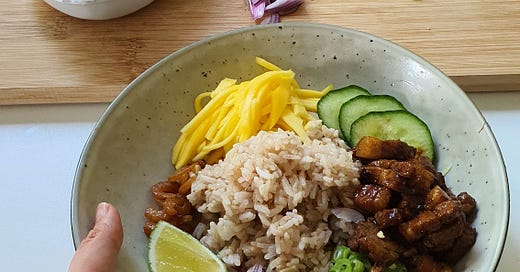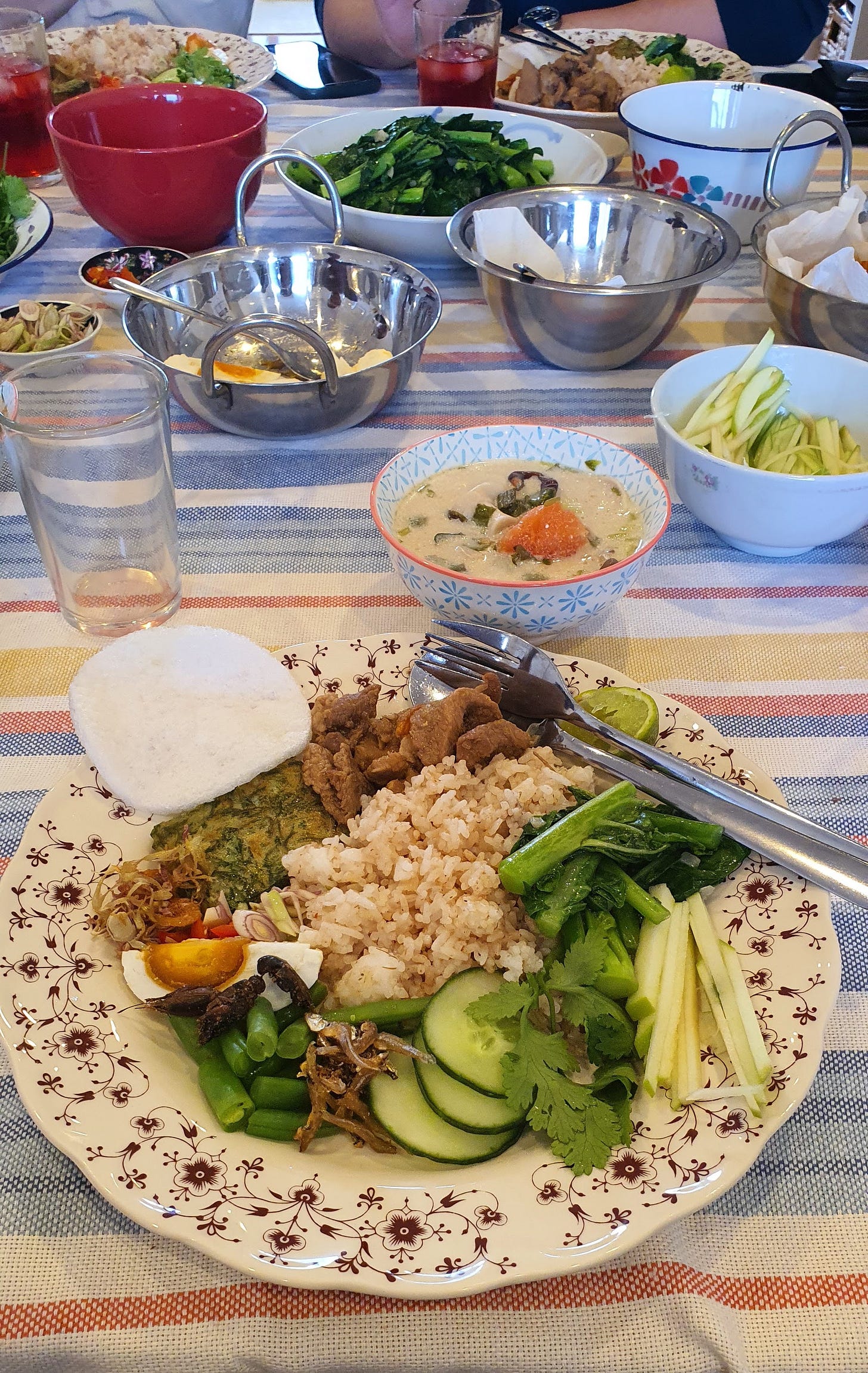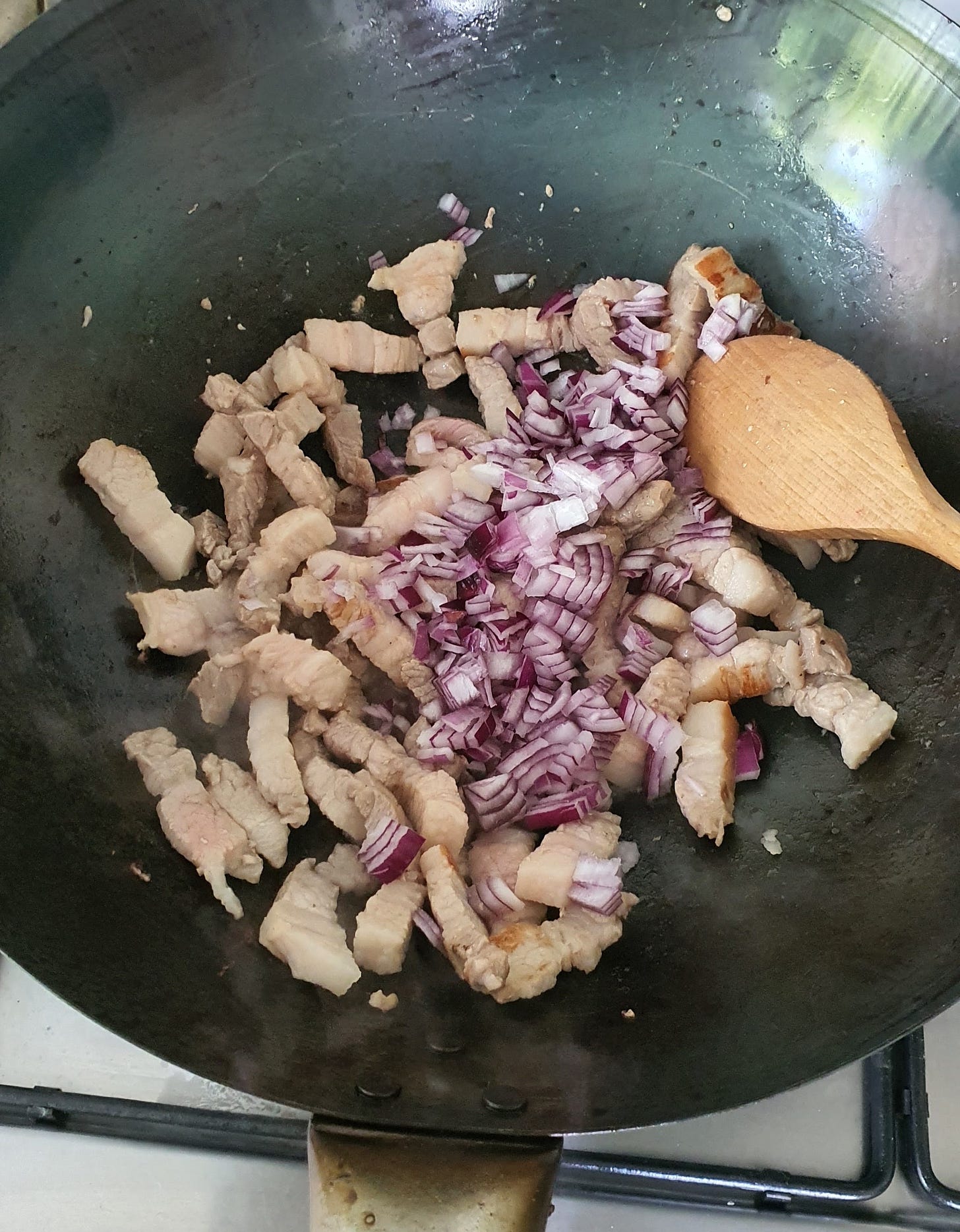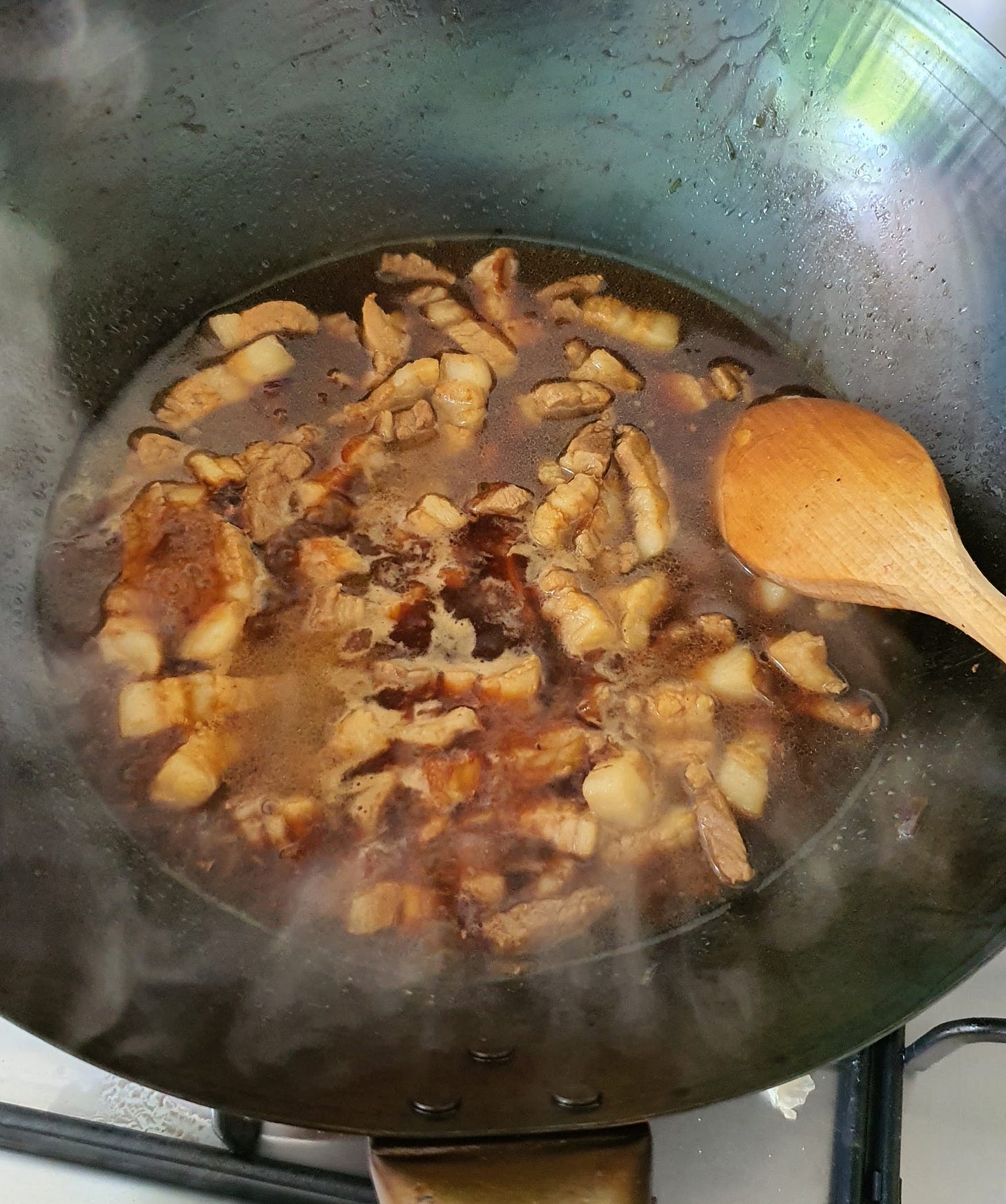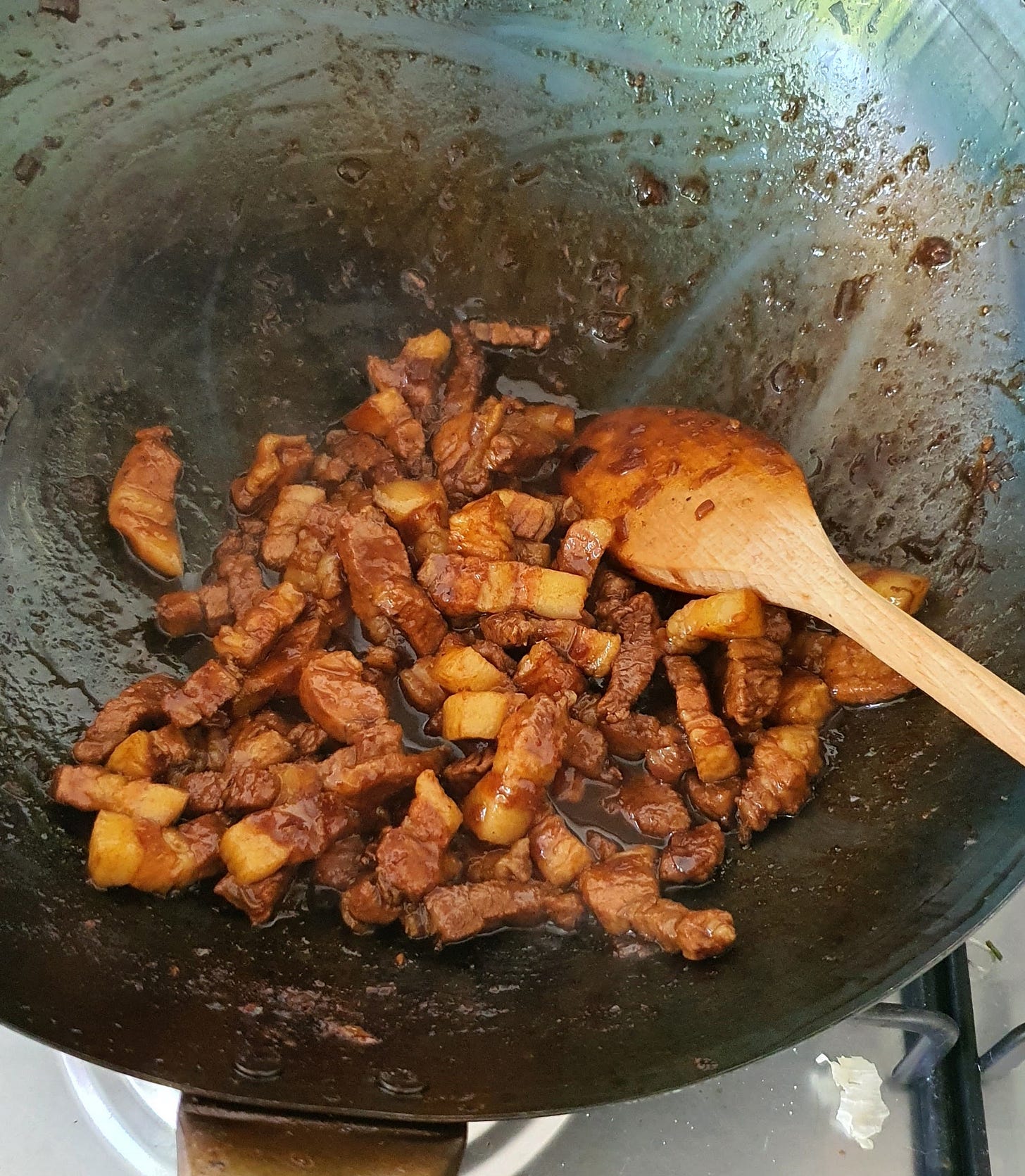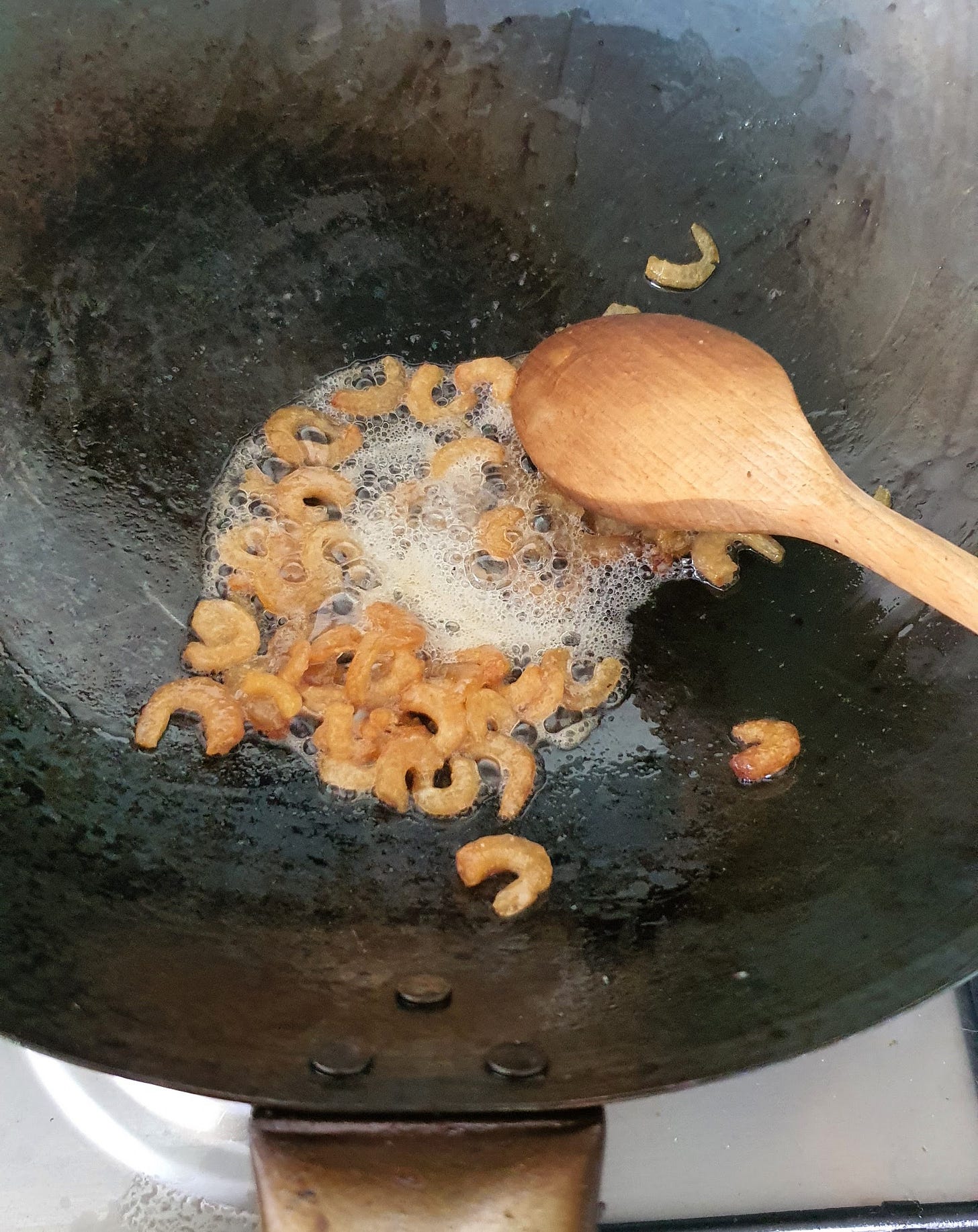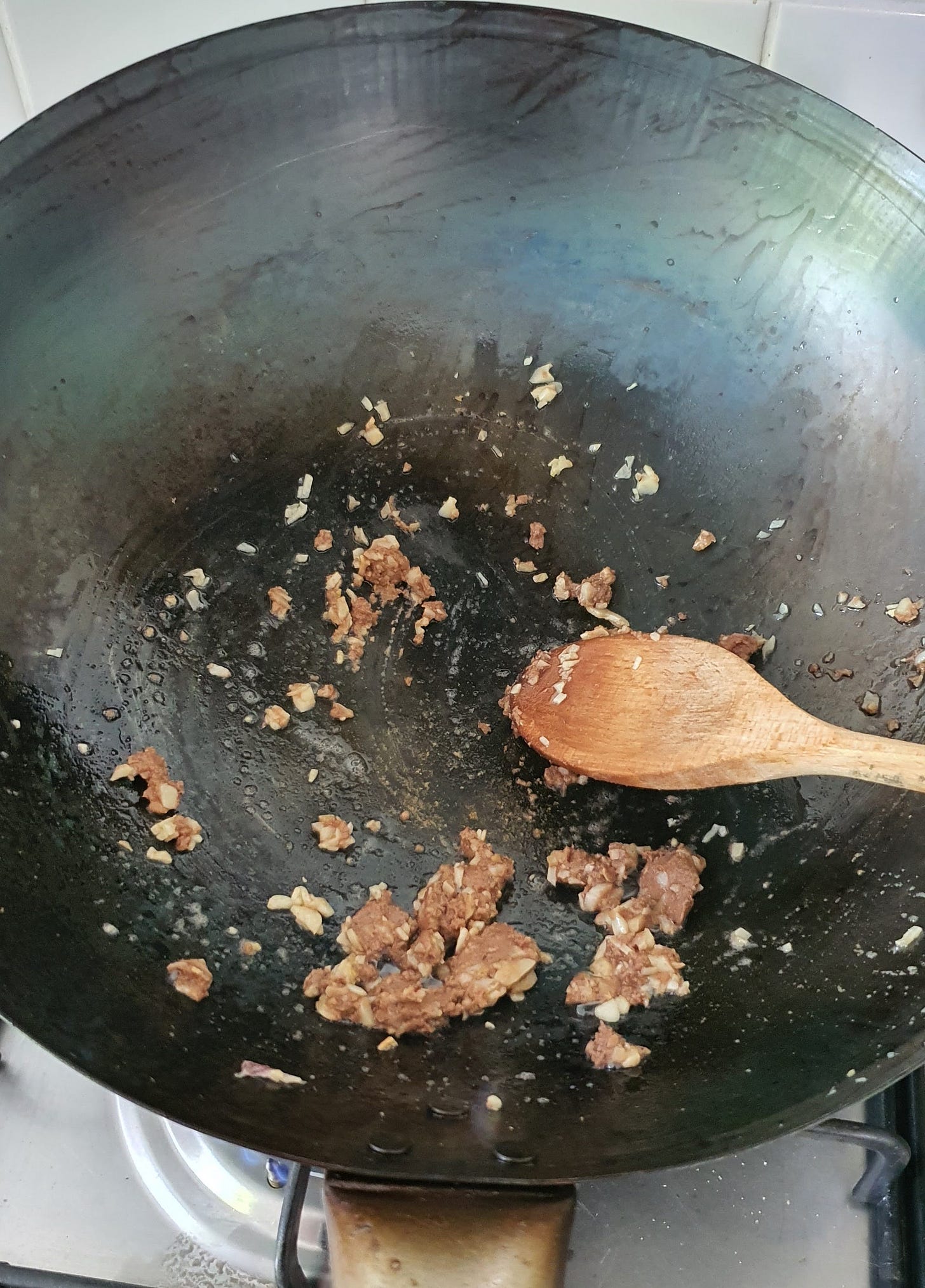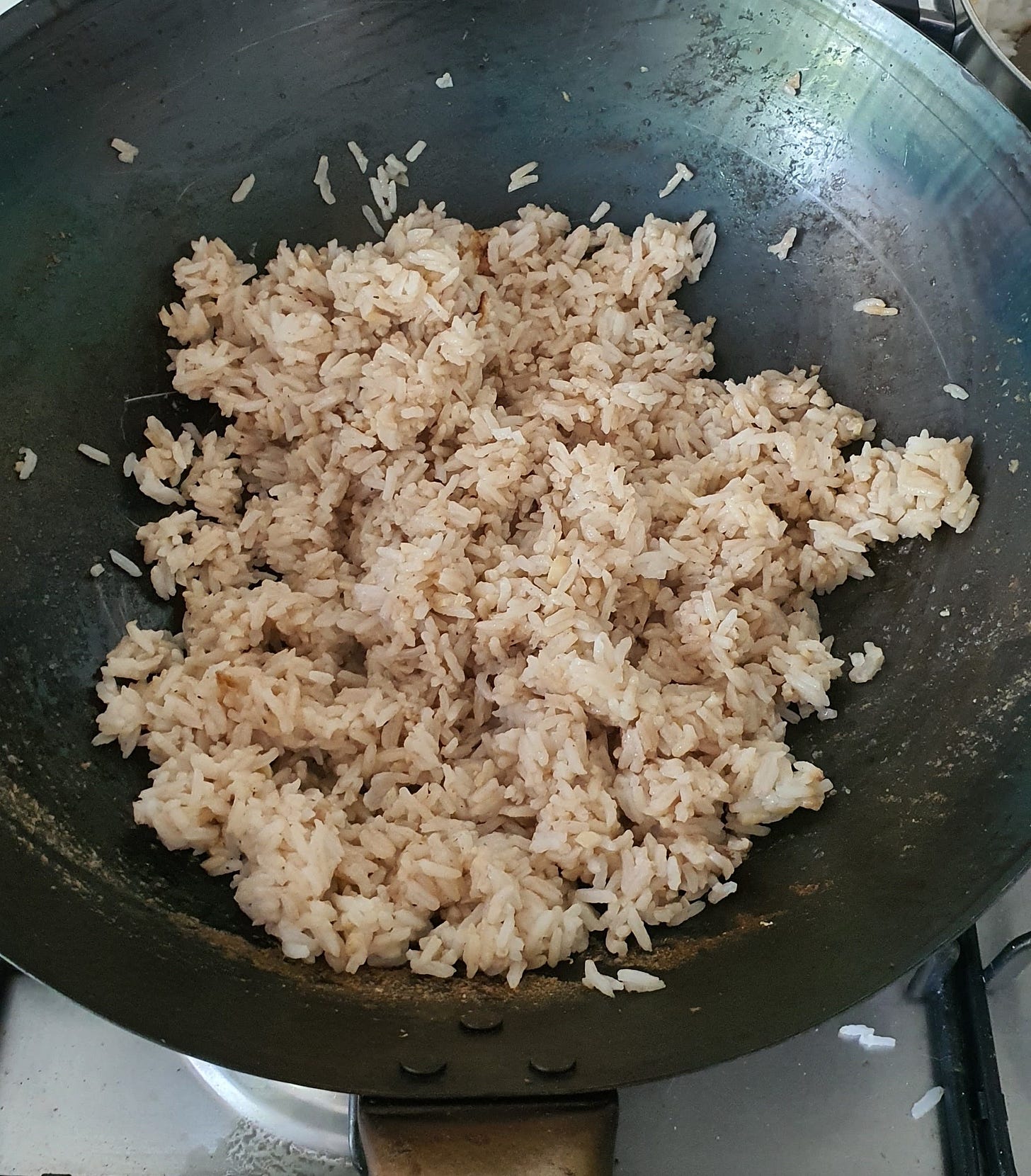Khao khluk gapi
I recently wrote an article for Channel News Asia that explored the lack of vegetables in the modern Singaporean diet (welcome to the newsletter if you’ve signed up via the commentary!). While I know that it might seem as though I’ve always loved my greens, that hasn’t always been the case.
My mom and dad - one Cantonese and one Hokkien - were both exceptionally healthy people. True anomalies in the Singaporean context, in my opinion. Both don’t drink, smoke or consume coffee. My mom made sure that almost all our meals at home were made from scratch, and cooked mainly via gentle cooking techniques such as boiling and steaming. My dad used to throw the seasoning packets from the instant noodle packets in our house. Things like chicken powder and MSG never belonged in my family’s kitchen - the prevalence of these ingredients in heritage cookbooks was frankly one of the reasons why I was turned off by local cooking in my youth.
Despite eating very little fast food and processed junk growing up, I truly loved my meat and dairy, and indulged in them with a complete disregard for any well-meaning advice on healthy eating. Family friends and relatives (and later, even my in-laws) would remark at how adept I was at navigating parts of the animal that most young Singaporeans would turn their noses up at - pig tails, the lips on a fish, duck’s tongue, beef tendon. I was proud that when something like a whole fish arrived at the table, a relative or my in-laws would say, “Give that to Pam. She knows how to eat it.” Loving meat became a big part of my identity, and in a warped way, I felt that if I ate less meat and embraced more greens, I would be less of a ‘true foodie’, whatever that meant. I shuddered at the thought of being one of those girls who ate only salads.
At 27, I got married, moved abroad, and became responsible for the meals that we ate at home. My husband Wex remarked one day that, while he enjoyed my cooking, I hardly gave any thought to my greens - I had simply been boiling them in water because the deliciousness of the meat component was all I cared about. A common dinner back then was something like: a whole hunk of meltingly soft, braised pork belly, rice to soak up the sauce, and a few measly strands of vegetables. And obviously, because the vegetables were so unremarkable compared to the meat, I ate less vegetables than I should have and the balance in my diet was way out of whack.
My work as a chef didn’t help. In the world of professional cooking, it felt like the most well-regarded chefs were the ones who were experts in meat and seafood. Vegetarian chefs or those specialising in vegetable cookery? Not so much.
What eventually compelled me to change my diet was recognising the impact of climate change. Growing up, the Singaporean experience felt so unique from the rest of the world. Seasonality isn’t a concept and we are very lucky to be protected from natural calamities. But, the year we moved to Australia, the bushfires were particularly severe and it made a formerly abstract concept very real. While I may never be able to give up meat or seafood completely, I could at least commit to being a part-time vegetarian or vegan, and give up eating meat some meals of the week. (Honestly, if you told me ten years ago that my future self would be writing a vegetarian cookbook, I wouldn’t have believed you.)
Since making this switch, I’ve been on the lookout for dishes that celebrate plants. They don’t have to be necessarily vegan or vegetarian, as long as the meat functions as part of a larger whole, rather than being the main draw on the plate. It’s little adjustments in mindsets like this that make lowering my meat intake feel a lot more realistic than going cold turkey and cutting it out altogether.
Right before leaving Australia for the Netherlands, we were introduced to khao khluk gapi (shrimp paste fried rice) by a fellow Singaporean Zaneta and her Thai partner Gate. Like us, they were also trying to lower their meat intake and the spread on the table reflected that. There was rice fried in shrimp paste or gapi (very similar to the belacan that we have in Singapore); leafy greens; salted egg; green apple, a stand-in for green mango; cha-om (climbing wattle) omelette; cucumber; long beans; dried anchovies; dried shrimp; muu waan (sweet pork) and more. I love that when I think about that meal, it wasn’t just the meat that stood out; the entire plate of food was memorable as a whole.
Since moving to the Netherlands, I’ve been thinking about that dish a lot, especially since I got my new wok! It really is the type of meal that I’ve grown to like - many small components that come together to form a well-balanced meal.
The three main components that require cooking are: the pork, dried shrimp, and fried rice. For the muu waan (literally ‘sweet pork’ in Thai), fry some sliced pork belly until it develops some colour, then add diced onion:
When the onions soften and release their fragrance, add barely enough water to cover, light soy, dark soy and palm sugar:
Cook until the liquid evaporates, by which time the pork belly would be tender and appear attractively glazed:
For the dried shrimp, soak in water briefly to rehydrate, then pat dry with paper towels and fry in oil until fragrant and golden:
Set the shrimp aside, leaving the fragrant oil in the pan. To the pan, add garlic and gapi. Gapi was a new ingredient to me; it is sold in tubs rather than in foil packets and, while belacan tends to have a crumbly texture, gapi’s consistency is closer to clay. It is worth frying the gapi thoroughly to allow the raw, fishy odour to develop into a fragrant and toasted aroma:
Add a splash of water to help the gapi dissolve, and cook the mixture until it turns into a thick paste:
Add the rice and stir-fry to coat evenly in the gapi mixture:
I served the rice, pork and dried shrimp with cucumber slices, strips of the most unripe mango I could find at the supermarket, sliced red onion, sliced red chilli padi, sliced beans and lime wedges. It was refreshing and reminded me of the tropics - the mango, in particular, was brilliant. It brought to mind mango dipped in soy sauce and sliced chilli, which I used to enjoy as a snack when I was younger, and reminded me of how good fruits could be in a savoury context.
In other news, I’d be opening preorders for my upcoming cookbook Plantasia in my next newsletter. It’s been a long journey and it’s almost like letting out a sigh of relief to finally be able to share all about it. Watch this space! 🧡
Khao khluk gapi
Serves 2 to 3
This recipe below is more of a serving suggestion rather than a recipe fixed in stone; you can switch up the toppings to whatever’s in season or abundant in your area. I also think that this is one dish that wouldn’t suffer from being veganised. The pork belly in muu waan could be substituted with deep-fried pieces of tempeh, and Gate left a suggestion that miso could stand in the place of gapi.
Muu waan:
420g pork belly, cut into lardons as thick as your pinky
1 small red onion, chopped
2 tbsp light soy sauce
2 tbsp dark soy sauce
3 tbsp palm sugar
Fried rice:
2 tbsp oil (preferably leftover from frying the dried shrimp - see below)
4 garlic cloves, chopped
2 to 3 tbsp gapi (fermented shrimp paste)
3 rice bowls worth of cooked, preferably leftover rice
Assembly:
Dried shrimp, soaked for 10 minutes, drained, patted dry with kitchen towels, fried in oil until golden brown
The unripest mango you can find, shredded
Cucumber, sliced
Small red onion or shallots, thinly sliced
Lime, cut into wedges
Red bird’s eye chillies, thinly sliced
Raw long beans or cooked green beans, sliced
For the muu waan, fry the pork belly on high heat in a wok or saucepan, stirring occasionally to encourage the pork to develop some colour. When the pork is completely opaque and golden brown on some sides, add the diced onions and continue stir-frying until they turn soft and fragrant. Add enough water to barely cover the pork, soy sauces and palm sugar. Simmer on medium heat, uncovered, until the water evaporates and the pork adopts a glazed appearance, about 30 minutes.
For the fried rice, heat the oil and add the garlic and gapi. Fry on low heat until the garlic and gapi smell fragrant, about 2 to 3 minutes. Add a splash of water and stir to dissolve the shrimp paste. When the mixture looks homogenous, add the rice and stir-fry on high heat, tossing well to coat the rice in the paste. Turn off the heat and adjust the seasoning with salt if desired.
For the assembly, place some of the fried rice in the bowl and top with the pork and the rest of the prepared ingredients.

